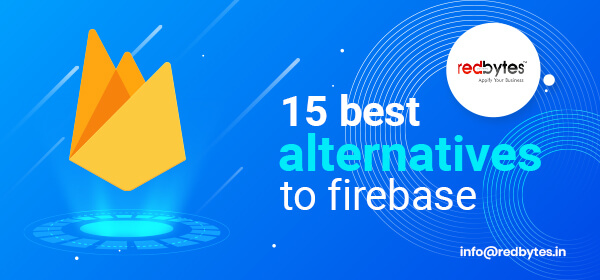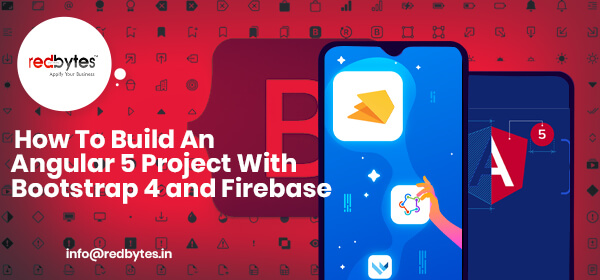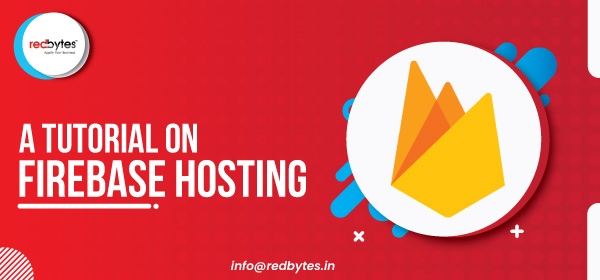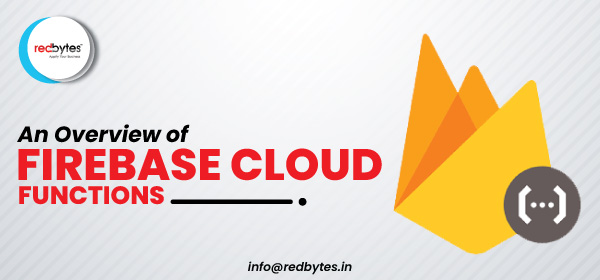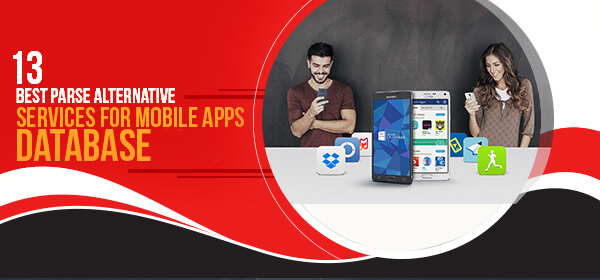If it is your prime aim to deliver web apps without having to write server-side programming code, you have an excellent option coming in the form of Firebase database. This is a technology that ensures a swift and easy development of web and mobile apps which can run on platforms like OS X, web, iOS and Android.
When you have Firebase by your side, you need not get bogged down by over-provisioning servers alongside building REST APIs. You can get away with these two requirements with some basic configuration.
With so much going in favor of Firebase, below are the top 15 alternatives of Firebase that can become your top choices.
| Parse server | Kinvey | Gamesparks |
| Back4app | PubNub | Deployd |
| Kumulos | Atmosphere | Hood.ie |
| Kuzzle | AWS Amplify | Heroku |
| Cloudboost.io | Firehose | GUN |
1. Parse server

Parse is an open-source mobile & web application platform. It has a strong developer community making it one among the best firebase alternatives.
Parse provide a handfull of backend tools helping developers to store data, manage identity, run custom codes etc. Easy customization of your app’s foundation is another advantage of Parse server.
Key features
- Offers a better user experience.
- Easy view of analytics & push notifications.
- Unlimited access to the software
- Hosted in almost all environments.
2. Kinvey

Kinvey provides the best cloud backend services on any app. It has higher flexibility for developers to setup & scale different mobile apps.
Kinvey can set up the majority of the cloud services and other backend elements. Kinvey’s business logic makes it popular among developers that they can easily host codes
Key features
- Add amultiple users.
- Choose from a variety of authentication systems
- Limitless data storage.
- Instant and secure syncing between apps & backend.
3. Gamesparks

Gamesparks is a dedicated gaming app development platform with a developer-friendly interface. This alternative is both highly scalable & flexible.
Other innovative features include latest messaging & social tools. Gamesparks is easier to optimize and build amazing server-side components.
Key features
- Live gaming & meta-game options.
- Social matchmaking & multiplayer.
- Enable easy IT asset management.
- Develop attractive game apps.
4. Back4app

Back4app is devoted to creating quality mobile and web applications. Whether it be single or cross-platform, back4app provides more ease to developers and focus them on another aspect of apps.
It helps to speed up the development process to about 80% along with efficiently hosting IoT, web, and mobile applications. Back4app has multiple solutions for rapid integration & convenient app development.
Key features
- Open-source & has private cloud options.
- Relational databases via GraphQL or REST APIs.
- Automated backups with the real-time database.
- Highly optimized storage methods.
5. PubNub
![]()
PubNub is popular for its versatile streaming abilities. You can create promising web and mobile apps with PubNub.
The most attractive feature is that it can send instant mobile push notifications even the app is not running. If you are planning for a chat service app, PubNub is perfect for accompanying you in the whole backend services.
Key features
- Integrate playback options.
- Stream controllers with a single connection.
- Transfer trillions of messages.
- Scalable chat APIs.
Read Also : A Tutorial on Firebase Hosting 2020
6. Deployd

Deployd is one of the open-source firebase alternatives. It is an adaptive API design platform empowering developer to engage in trouble-free app development on both web and mobiles.
It’s quicker test API helps while developing user interface making it an amazing solution. Deployd has HTTP and REST APIs which can be hosted by cloud platforms.
Key features
- Easier testing procedures
- Javascript is used throughout
- Intuitive web-based dashboard
- Easy developer-friendly deployment.
7. Kumulos

Kumulos is a driving solution for effective mobile app development business. Developers can rely on this multi-tenant solution to provide easy to use in-app messaging service to your clients.
Kumulos ensures a winning branded messaging app where your clients can conduct campaigns and gauge its effects.
Key features
- Focused on Push notification platforms.
- Closer client engagements.
- Timely reports on app management.
- Improve app’s commercial performance.
8. Atmosphere

Atmosphere is a perfect tool for designing both client & server-side frameworks. This technology is so popular that this is compatible on majority servers and browsers.
Atmosphere supports long-polling, HTTP Streaming, Web Sockets and Server Sent Events (SSE) along with JSONP.
Key features
- Best asynchronous web applications.
- Free to download.
- Detailed API Documentation.
- Easy to scale.
9. Hood.ie

Hood.ie is a self-hosted platform helping developers to manage multiple solutions. It is a highly supporting alternative with a small developer community. Hood.ie comprises offline resources that can productively utilize its amazing features in each app.
Key features
- Local & hosted development.
- Simple Javascript-based services.
- Dream-code Driven API.
- Simple & easy procedures.
10. Kuzzle

Kuzzle is an amazing backend platform that is highly flexible and a boon for developers. This is best suitable for web, mobile, and IoT application development.
Kuzzle is designed with an emphasis on rapid market methods & enabling higher ROI for developers. These factors make it preferable than firebase or others include real-time functionality & multi-protocol API.
Key features
- Advanced search options
- Highly flexible backend services
- Manage push notifications
- Real-time geofencing & data sync.
11. AWS Amplify

AWS is a package of excellent backend tools making developers & organizations conduct easier app development.
The most striking feature is that it can create serverless apps that can integrate with Javascript-based front-end elements. It comprises a declarative API to handle multiple cloud operations.
Key features
- Work with multiple vendors & buyers.
- Real-time database
- Instant push notifications.
- Multiple cloud operations.
12. Heroku

Being one among the best firebase alternatives, Heroku is a service-based system with a powerful development ecosystem.
With an app-centric approach, Heroku serve as an all-in-one solution for developers. Heroku is rich with the latest backend developer tools and workflows.
Key features
- Easy customization of app stacks.
- Easy service add-ons.
- Instant troubleshooting of issues.
- Regular audits & high protection.
13. Cloudboost.io

Cloudboost.io is one of the reliable firebase alternatives with features like push notifications, user authentication, slack integration, cache, and more.
This is an open-source platform where developers can make easy backend operations without any troublesome vendor lock-ins. You can assure supreme UI & UX features in mobile and web applications you create.
Key features
- Easy offline syncing.
- Effortless real-time app development.
- Unlimited storage.
- Robust APIs with high connectivity
14. Firehose

Firehose is one of the best alternatives for firebase with comprising RESTful design principles. The elaborate rewriting procedure is absent here. Firehose never requires complex protocols.
You can use those subcodes that easily work with the client-side Javascript. Firehose enables in creating real-time web applications at ease.
Key features
- Active web frontend Dashboard
- Easy backup & restore.
- Effective database service.
- High data protection.
15. GUN

Gun helps in managing error-free backend services. Website app development is easier and the resources focus on the minute fragments of app development.
Gun is an open-source alternative that is best for managing small applications. The enterprise package for buying the platform is about $999.
Key features
- Decentralized & specific databases.
- Excellent database engine.
- Real-time user & app management.
- Secure app data.
Read Also : An Overview of Firebase Cloud Functions 2020
Closing Thoughts
Notwithstanding the fact that Firebase comes with a plethora of mobile app development features supporting you to scale your infrastructure requirements, it is time you check out the perfect substitutes that are now available.
Each of the above alternatives of firebase showcases great features & complements each other in terms of the functionalities and tools they comprise.
Developers can lead an errorless backend process with these amazing solutions. You can decide & choose the best alternative to develop and deploy your apps with satisfaction.
